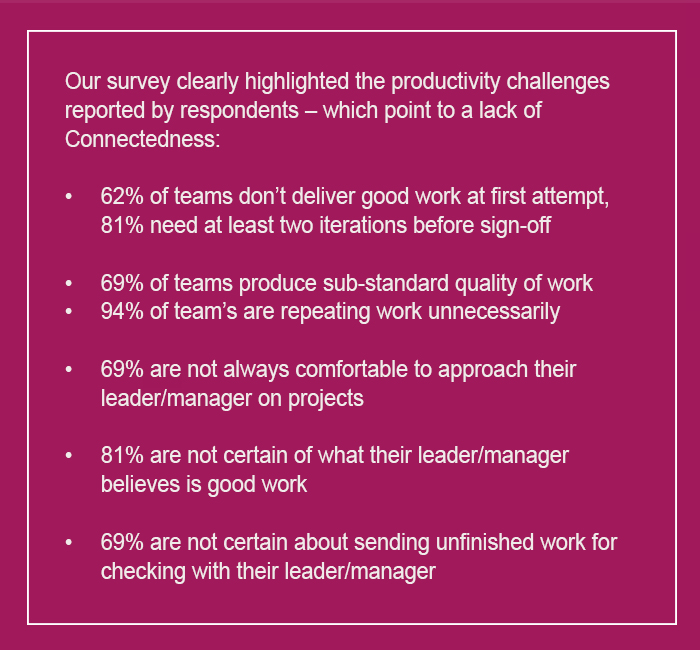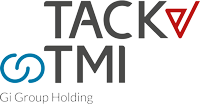Bouncing back from 2020
Tack TMI, 25th February 2021
It’s no surprise that in a recent Tack TMI survey, nearly 70% of business leaders felt their businesses had been negatively affected in the past 12 months. Though it now seems that businesses and the population at large are on the path to recovery after 2020’s COVID-19 pandemic, there are a number of challenges that lie ahead to restore levels of productivity.
Based on our research, these challenges are principally people-related – in fact, nearly two thirds of our respondents put them at the top of their list. Complicating matters further, these will not simply be the challenges of old – performance management, manager development and talent acquisition. Rather, organisations will need to address the complicated hangovers left by the pandemic – burnout, disengagement, and demotivation. Although changes in working habits have given most employees the flexibility of home working, we’ve all discovered the reality of Zoom exhaustion and the feeling that we’re living at work (rather than working from home!).
As teams and managers have rarely been co-located, it may have been difficult to spot the symptoms. A lack of motivation could been observed through overall quality of work. Or burnout could be observed by the need to re-work, at times, unnecessarily – when briefs are incomplete or communication is missed in the noise of completing technology platforms.
In our 100 years of working to unlock human potential, our survey results pointed to a tenet as critical in life, as it is in business. Connectedness. Humanity at large, and employees within organisations – though increasingly connected by technology – do not feel connected to each other.

Connectedness: the key to unlocking productivity
The interesting thing about connectedness is the meaning we derive from it – that we matter to others, and they matter to us. The absence of it, therefore, can create a crisis of confidence. In the workplace, when we feel connected with our teams, we often feel valued and respected. When we’re connected with an organisation, we have a greater sense of belonging – increasing the likelihood that we will invest discretionary effort, and carve a long-lasting career path in it.
However, the combination of the effects of the Pandemic, compounded by poor or absent leadership, the lack of connectedness is having startling consequences:
- Ambiguity exists about what “great work” looks like, and individual expectations are left uncalibrated
- 70% of employees feel they cannot check-in on the progress of their work, as they feel their Managers are inapproachable
- The barriers to communication created by virtual work have made employees feel more distant – from their Managers and their teams – especially on a personal level
- Fewer touchpoints provide less direction and inspiration for action – meaning projects stall and motivation wanes
What complicates matters still, is that to address some of the issues above requires a quality conversation, leading to a (potentially) emotional response. Even more unappealing when you consider this conversation over MS Teams. So, how do we start to re-build the connectedness with our teams?
6 Tips for re-establishing Connectedness in your Team
- LISTEN
Find ways to demonstrate empathy with team members who have been struggling. Create opportunities to listen, and find ways to acknowledge the negative effects that certain behaviours may have promoted - PROVIDE GENUINE FEEDBACK
Steer clear of personal or evaluative praise – focus on informational feedback, with a human touch. - WATCH YOUR WORDS
A key way of re-establishing connectedness is re-establishing individual control in a situation. Carefully use language that promotes choice and a variety of strategies – questions like “given where you are now, what different choices do you have to respond to the situation?” - HELP YOUR TEAM BREAK DOWN PERCEIVED BOUNDARIES
A great metaphor here is a team sport like football – you wouldn’t think it, but the teams work within boundaries, and boundaries are true in business too. The question to ask, is “how can you, like a footballer, play and show creativity *within* these boundaries? Where can you move, where can you pass, where is the open space?” - ENABLE PURPOSE-BASED WORK
Help individuals align work and tasks with their own identified values and work-related purpose. Find ways to frame actions in terms of the welfare of the team as a whole. - COLLABORATIVELY SET GOALS
Ensure that your teams have a part to play in crafting and committing to their own goals. The work we can do as managers is to connect individual efforts as contributions to the greater good. Always ensure agreement on these goals before proceeding “By mid-April we will have surfaced all relevant information, right? So, does this mean by June you’ll be in a position to have validated our preferred option?”
The bottom line
It may be that the idea of connectedness still seems too ephemeral to effect or it may seem too flimsy a concept to have real business impact. The reality is, that the impact of connectedness – belonging, or more conventionally referred to as engagement – directly affects the bottom line. Employees with a greater sense of belonging were 56% more likely to perform better than their peers at work, they were 50% less likely to leave the organisation and took 75% less sick days, on average. Better yet, this connectedness decreases anxiety, increases well-being and increases individual and team productivity – and ultimately, business results.
For more information about Tack TMI’s approach to employee motivation, and the programmes we are delivering with Global clients to grow leaders who build connectedness in their teams, please get in touch.
Statistics contained within this article are based on a global survey conducted by Tack TMI and our Global Clients in December 2020. Other sources include: Udemy (2021 Learning Trends Report) and studies by the University of Melbourne, Australia.
